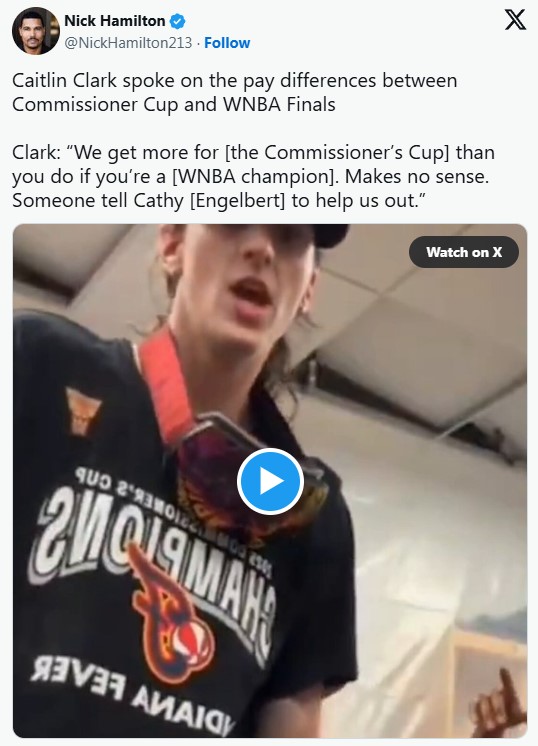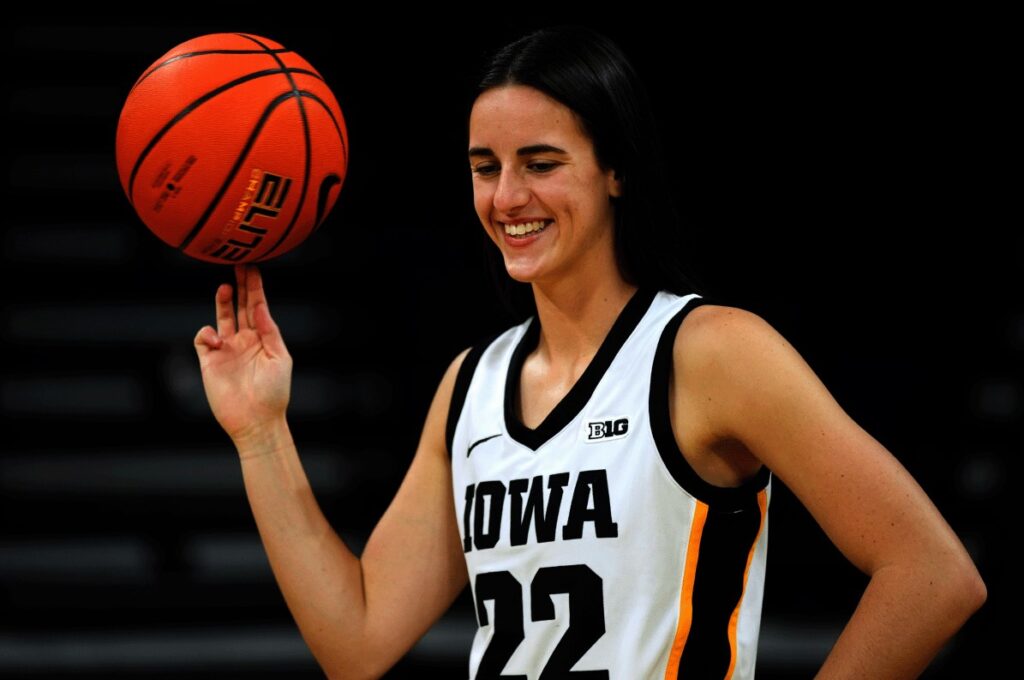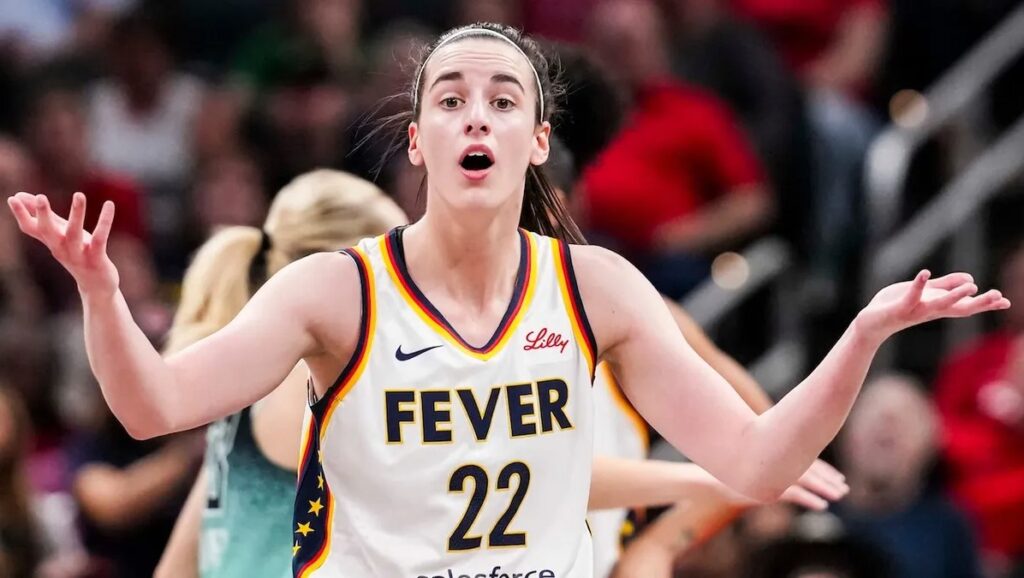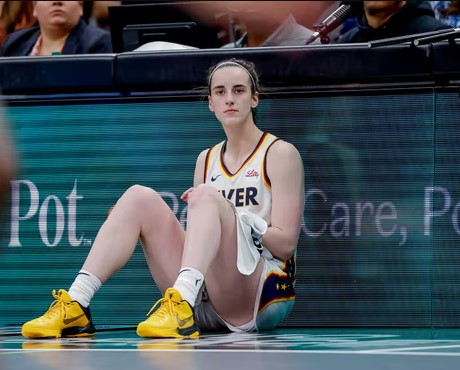Caitlin Clark’s Bold Challenge: WNBA Salary Disparity Exposed
When the WNBA’s Commissioner’s Cup was introduced five years ago with great fanfare, the league marketed it as another golden opportunity to put more money directly into players’ pockets while simultaneously creating additional competitive excitement throughout the regular season. The trophy for winning this mid-season tournament rewards a team for excelling in regular-season intraleague competition and comes with a substantial $500,000 purse to be split among the winning squad’s players, making it one of the most lucrative prizes in women’s professional basketball. The event has proven to be increasingly popular among fans across the country and appears to be genuinely motivating for players who compete with heightened intensity during the designated games.

However, after Tuesday’s victory in the event, Indiana Fever superstar Caitlin Clark used the prize money as a powerful platform to point out the glaring desire for WNBA players to receive significantly higher salaries across the board. “You get more money for this than you do if you’re the WNBA Finals champion,” Indiana Fever guard Caitlin Clark said on a teammate’s locker room Instagram livestream Tuesday night after her team secured the championship victory against the Minnesota Lynx in a thrilling contest. “It makes absolutely no sense whatsoever, and someone needs to tell WNBA commissioner Cathy Engelbert to help us out immediately,” she declared while jokingly referring to the competition as the “Cathy Cup” in a moment of levity.
The stark reality that Clark highlighted reveals a troubling compensation structure within the league, as WNBA champions receive only $11,356 per player for winning the ultimate prize, which is significantly less than what Commissioner’s Cup winners receive for their mid-season tournament victory. Clark didn’t participate in the game due to a nagging groin injury that kept her sidelined, but her current $78,066 salary represents a pittance compared to her estimated net worth and market value, creating a discrepancy that is disturbingly similar to that experienced by many other WNBA stars with their relatively modest paychecks.

Under the terms of the current collective bargaining agreement that governs player compensation, the WNBA supermax contract reaches only $249,244 annually, and Clark would be required to complete her entire four-year rookie contract before becoming eligible to earn that maximum amount. These restrictive terms were formally agreed upon during the 2020 collective bargaining agreement negotiations between the players’ association and league ownership, establishing a framework that many now consider outdated given the league’s explosive growth. However, the players’ association and the league are currently engaged in intensive negotiations once again, following the players’ strategic decision to opt out of the current agreement before its scheduled expiration.
Salaries are reportedly emerging as the most critical and contentious issue in these ongoing talks, particularly as the league’s popularity continues to soar to unprecedented heights with record-breaking viewership numbers and attendance figures. The current agreement did include more than $1.6 million in annual marketing opportunities for players along with various performance bonuses designed to supplement base salaries, but these additional revenue streams pale in comparison to what players believe they deserve. “I think the money has been more at the forefront of players’ minds than anything else this season,” Fever coach Stephanie White candidly admitted before Tuesday’s championship game, acknowledging the growing financial concerns among her players.

The league finds itself in an unprecedented spotlight as never before in its history, with the WNBA proudly reporting that its broadcast audience reached a record-breaking 54 million unique viewers across various networks throughout 2024, setting a remarkable new benchmark with 22 regular-season telecasts that averaged at least 1 million viewers each. Attendance figures also reached impressive new heights at arenas across the country, and merchandise sales increased substantially throughout the season, primarily driven by the meteoric emergence of new stars like Clark, Angel Reese, and numerous other talented rookies entering the league with tremendous fanfare.
Significantly increasing salaries across the board represents a complicated financial issue that requires careful consideration of multiple factors affecting the league’s long-term sustainability and growth potential. Unlike the NBA’s well-established 50-50 revenue split between players and ownership, WNBA player salaries currently account for less than 10 percent of the league’s total revenue, highlighting the vast disparity in compensation structures between the two professional basketball leagues. The league also operates under a hard salary cap per team of $1.5 million total shared among 11 or 12 players on each roster, which significantly limits individual player salaries and creates intense competition for limited financial resources.

A crucial key to increasing revenue streams, and thus enabling higher player salaries, lies in securing more lucrative media rights contracts that reflect the league’s growing popularity and cultural significance. Last year marked a historic milestone when the WNBA secured a groundbreaking $2.2 billion media rights deal spanning 11 years, representing the richest contract in women’s sports league history and providing hope for future salary increases. WNBA expansion is also dramatically changing the competitive landscape, with additional roster spots expected to become available over the next five years through the strategic addition of three new teams that will create more opportunities for players.
The league has announced ambitious plans to bring franchises to Cleveland in 2028, Detroit in 2029, and Philadelphia in 2030, in addition to the highly anticipated new franchises in Toronto and Portland beginning next season and the Golden State Valkyries, which successfully launched this season. Indianapolis will host the prestigious All-Star Game on July 18, when the pressing topics of salary negotiations and league growth will undoubtedly take center stage among players, coaches, and league officials. Clark and Minnesota’s talented forward Napheesa Collier were named captains for this marquee event, ensuring that the salary discussion will continue to receive significant attention from media and fans alike throughout the weekend festivities.